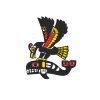The Cowichan Watershed is home to many fish species. This is a function of both the size of the watershed and its incredible ecological richness as habitat and in terms of nutrients. The ecological health of the watershed is reflected in the health of its fish. It’s a mutual relationship. Healthy fish make a healthy […]
Cowichan Estuary
The Cowichan Estuary is one of the most important estuaries in British Columbia from an ecological perspective. It is habitat for up to 230 bird species, and rearing habitat for four salmon and three trout species. It has been the home to Cowichan Tribes for millenia, and to thousands of other people in more recent […]
Quamichan and Somenos Lakes
Somenos Lake and Quamichan Lake are sister lakes in the Cowichan Watershed. Both lakes were formed when glaciers receded 11,000 years ago; both are shallow (seven metres deep) and bowl-shaped; and both can be expected to fill in and disappear in the next few thousand years. At present, the two lakes share a common set of […]
The Cowichan Lake Weir
The weir on Cowichan Lake is used to control the outflow from the lake into the Cowichan River during the spring-fall season. For much of the time between late fall and late spring each year, it does nothing, and the weir is referred to as “off control” since the lake level is above the top […]
Group collects trash on land and water
Lexi Bainas, The Citizen, October 01, 2010 A small but enthusiastic group turned out early Sunday morning, Sept. 26, to help clean up the sides of the Cowichan River near Skutz Falls to celebrate World Rivers Day. While a few folks wandered the trails along the edge of the heritage river, making an enjoyable walk […]




 Email
Email



